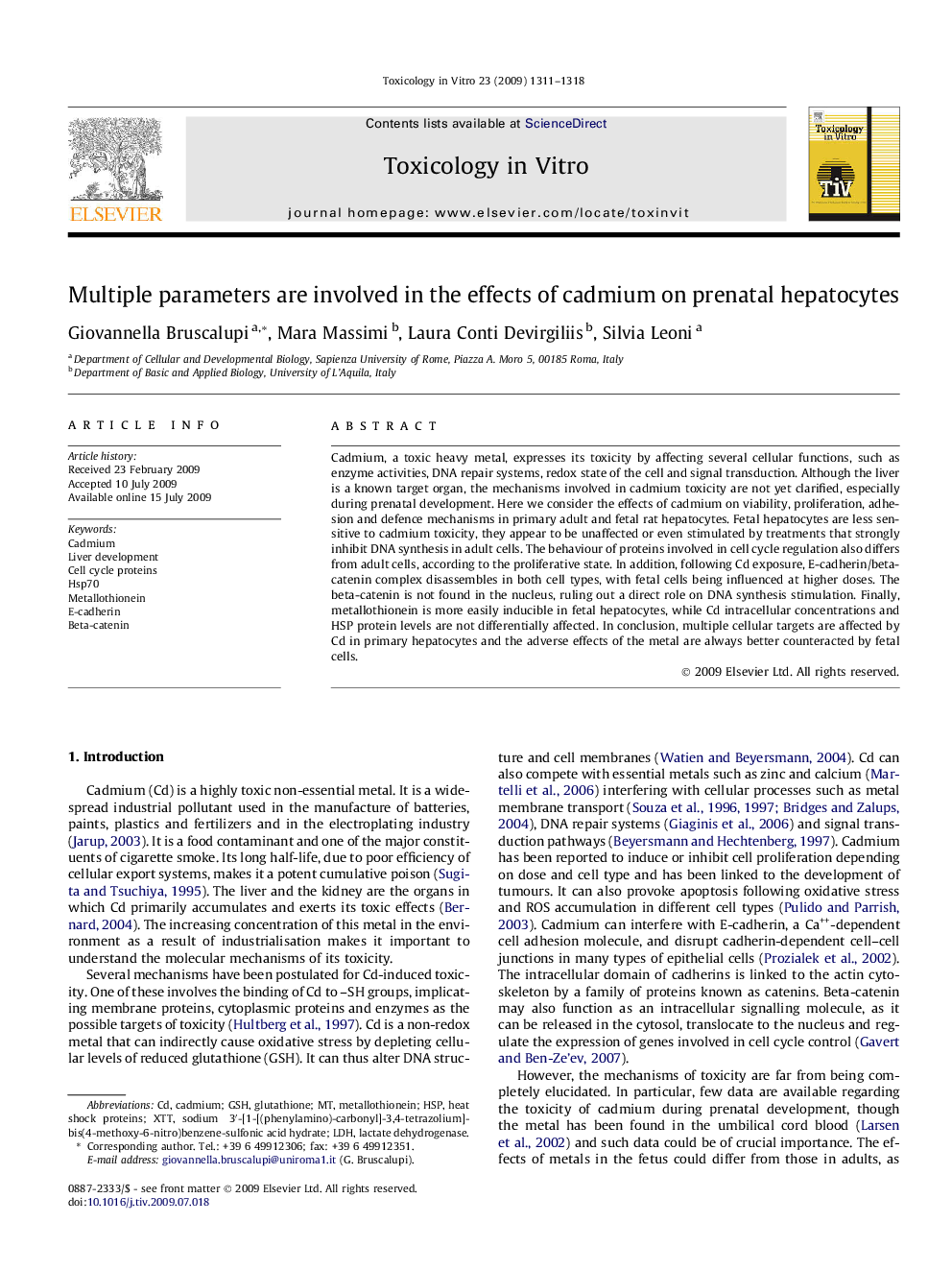| Article ID | Journal | Published Year | Pages | File Type |
|---|---|---|---|---|
| 2602716 | Toxicology in Vitro | 2009 | 8 Pages |
Cadmium, a toxic heavy metal, expresses its toxicity by affecting several cellular functions, such as enzyme activities, DNA repair systems, redox state of the cell and signal transduction. Although the liver is a known target organ, the mechanisms involved in cadmium toxicity are not yet clarified, especially during prenatal development. Here we consider the effects of cadmium on viability, proliferation, adhesion and defence mechanisms in primary adult and fetal rat hepatocytes. Fetal hepatocytes are less sensitive to cadmium toxicity, they appear to be unaffected or even stimulated by treatments that strongly inhibit DNA synthesis in adult cells. The behaviour of proteins involved in cell cycle regulation also differs from adult cells, according to the proliferative state. In addition, following Cd exposure, E-cadherin/beta-catenin complex disassembles in both cell types, with fetal cells being influenced at higher doses. The beta-catenin is not found in the nucleus, ruling out a direct role on DNA synthesis stimulation. Finally, metallothionein is more easily inducible in fetal hepatocytes, while Cd intracellular concentrations and HSP protein levels are not differentially affected. In conclusion, multiple cellular targets are affected by Cd in primary hepatocytes and the adverse effects of the metal are always better counteracted by fetal cells.
